Route alerts into Squadcast using Email endpoints of Services from platforms that support Email integrations.
In Squadcast: Using Email as an Alert Source
(1) From the navigation bar on the left, select Services. Pick the applicable Team from the Team-picker on the top. Next, click on Alert Sources for the applicable Service
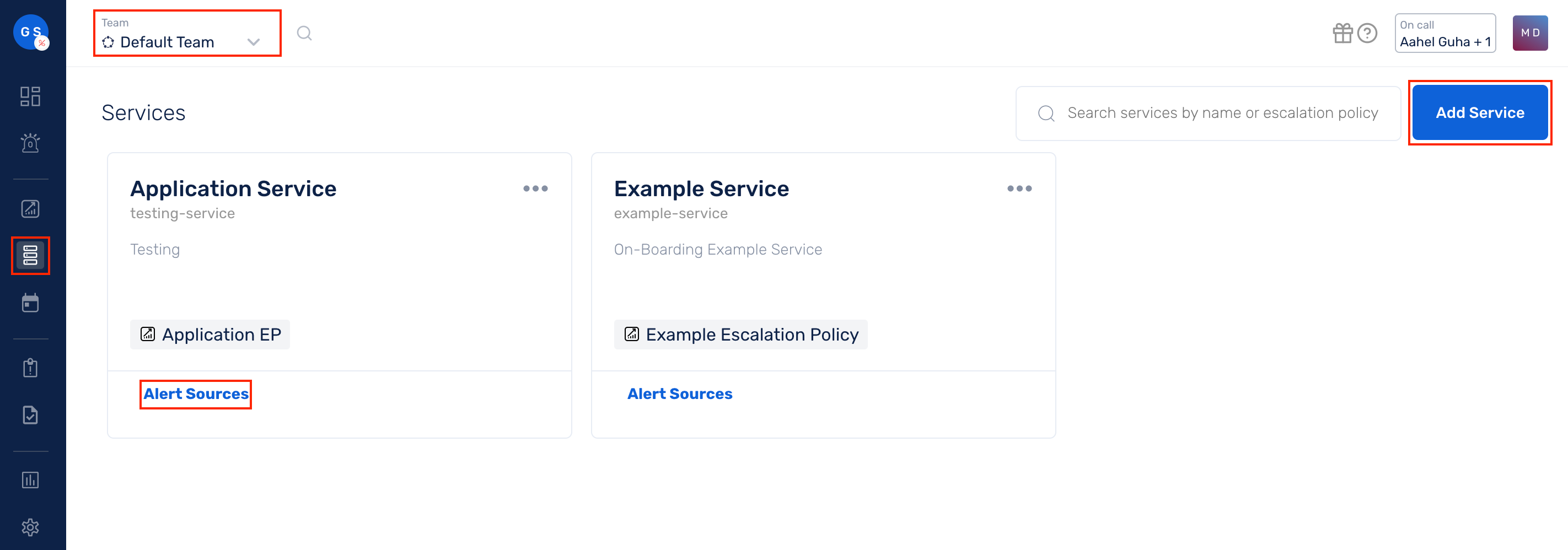
(2) Search for Email from the Alert Source drop-down and copy the Email address
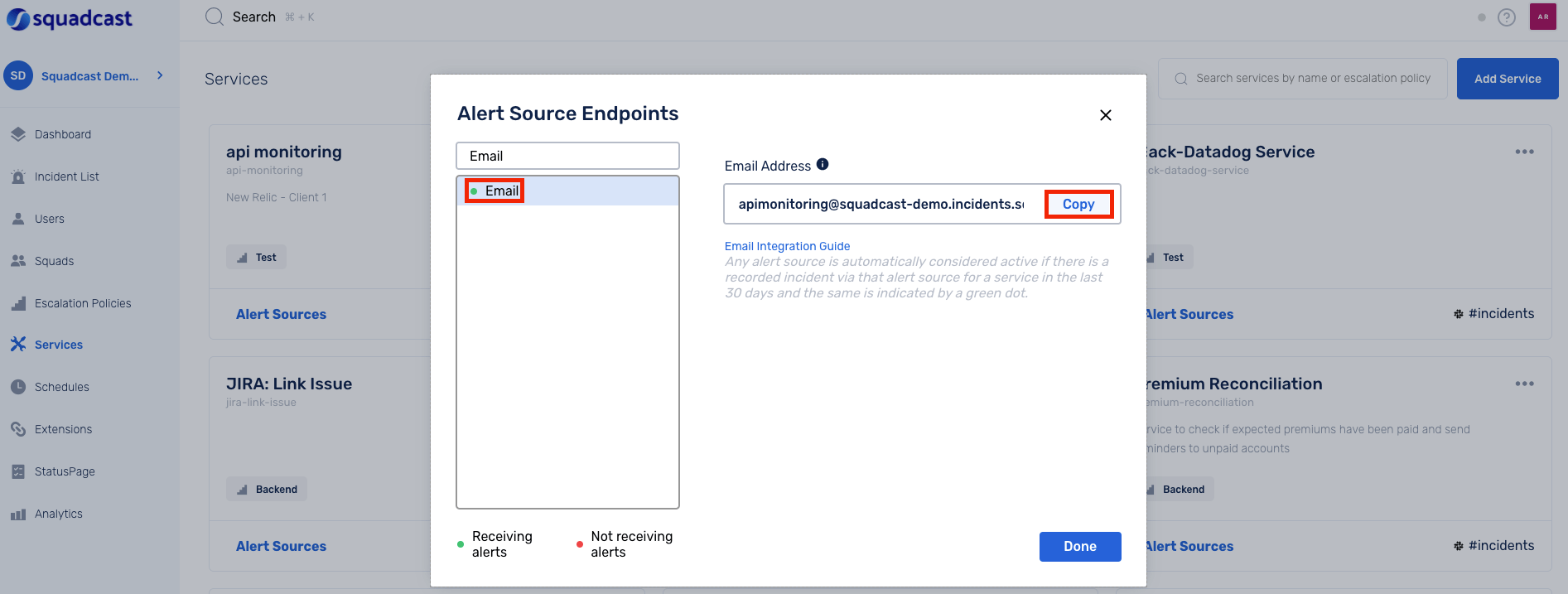
For an Alert Source to turn active (indicated by a green dot - Receiving alerts against the name of the Alert Source in the drop-down), you can either generate a test alert or wait for a real-time alert to be generated by the Alert Source.
An Alert Source is active if there is a recorded incident via that Alert Source for the Service in the last 30 days.
In the external platform which you are using: Configure the Email endpoint
Head over to the platform from where you want to route alerts into Squadcast. Navigate to the section where you can configure the Email endpoint/integration. Then, paste the copied Email address in the right placeholder and test this integration, if there is a provision to do so, and validate that the integration works.
That’s it, your Email integration is now good to go!
The Incident Message will be the subject of the Email and the Incident Description will contain the body of the Email
How-to: Configure the Email Prefix for a new Service
(1) On the Sidebar, click on Services
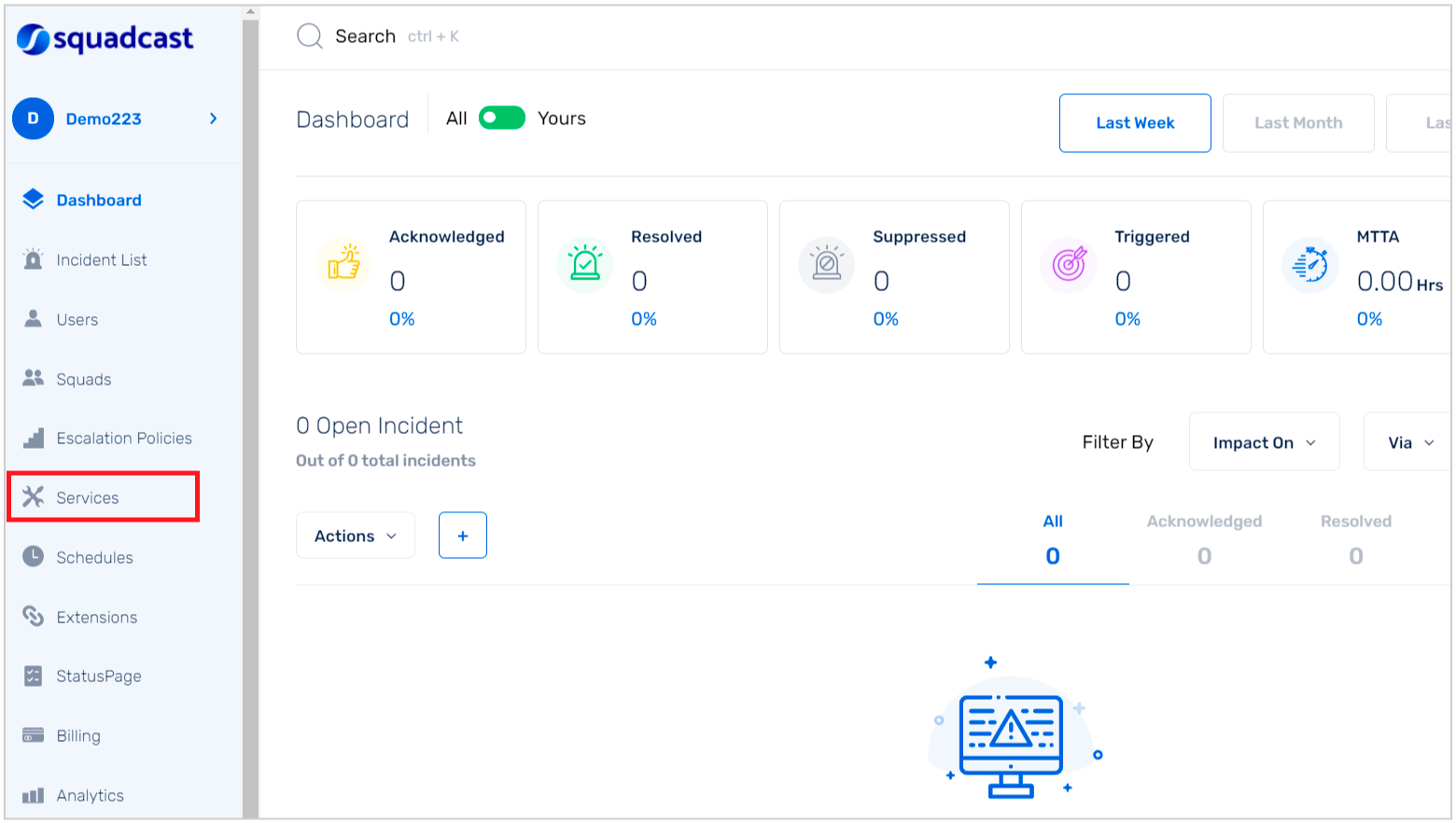
(2) Select Add service

(3) Add the details in the box as required along with configuring the Email Prefix
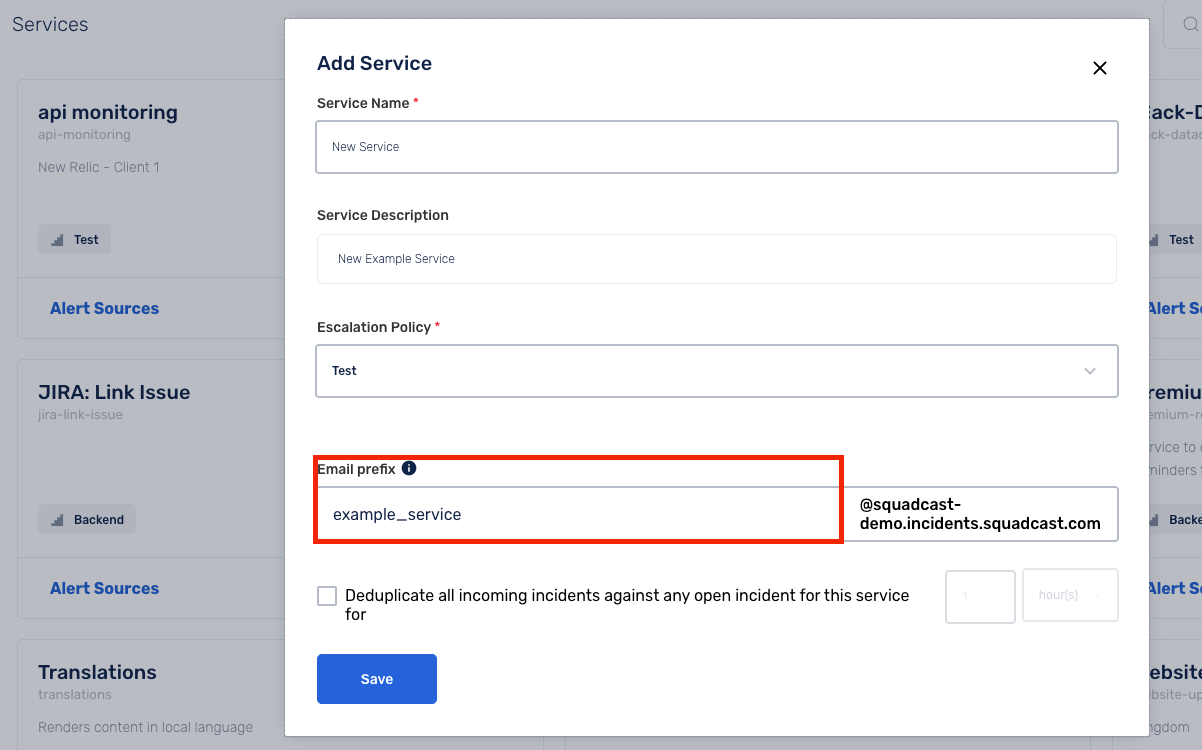
(4) Click on Save to create the new Service with an Email Prefix of your choice
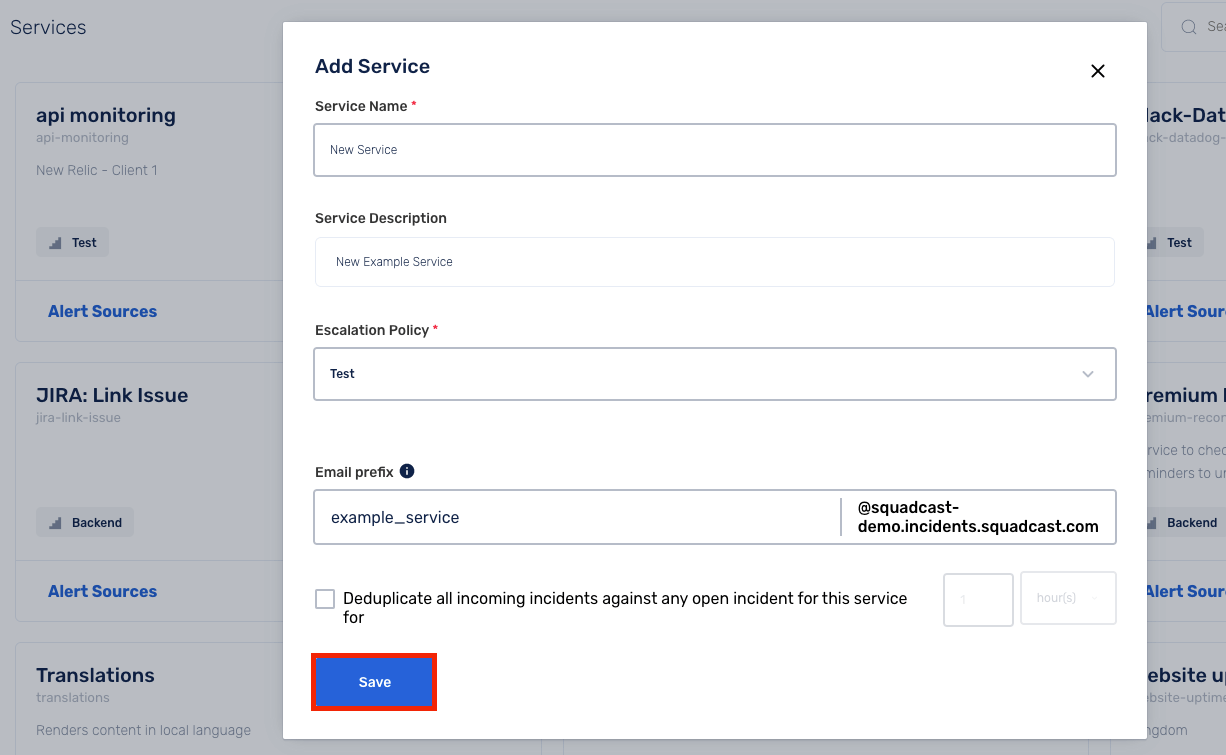
How-to: Rename the Email Prefix for an existing Service
(1) On the Sidebar, click on Services

(2) For the Service for which you want to rename the Email prefix, click on the Edit option
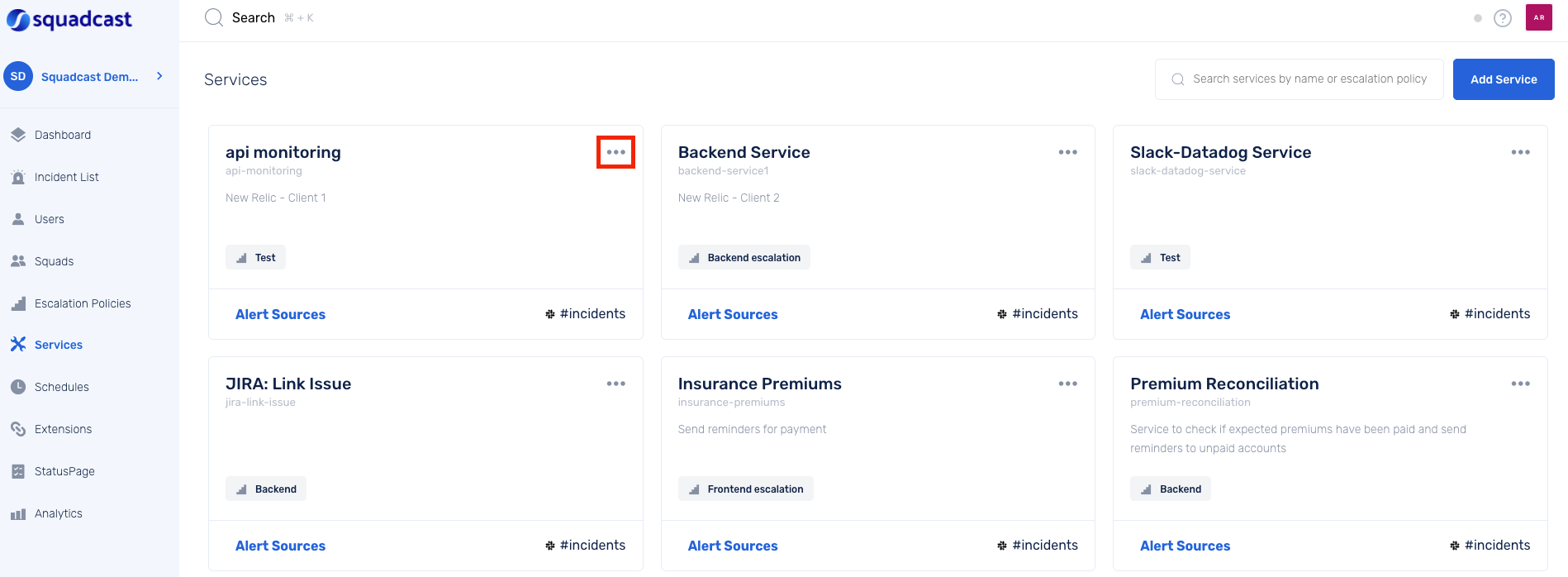
(3) Select Edit in the drop-down
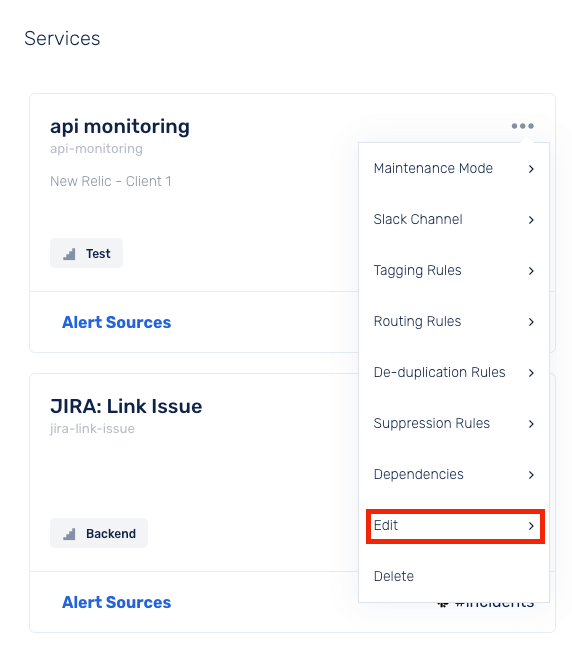
(4) Replace the existing prefix with the prefix of your choice in the placeholder for Email Prefix
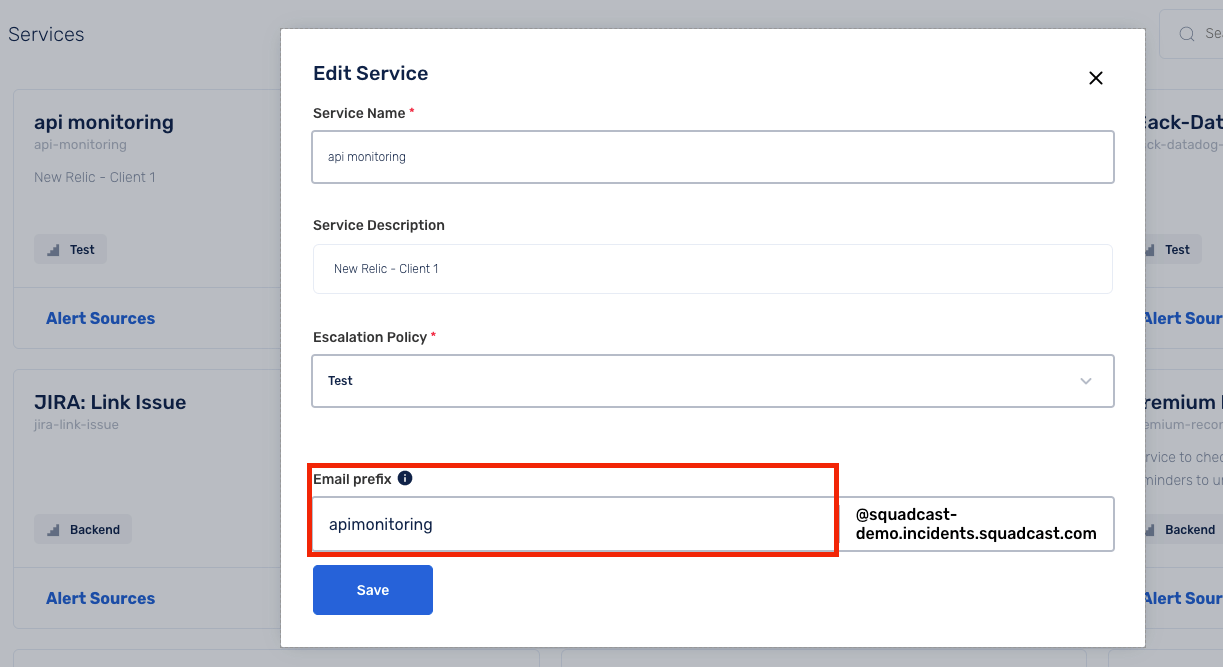
(5) Click on Save
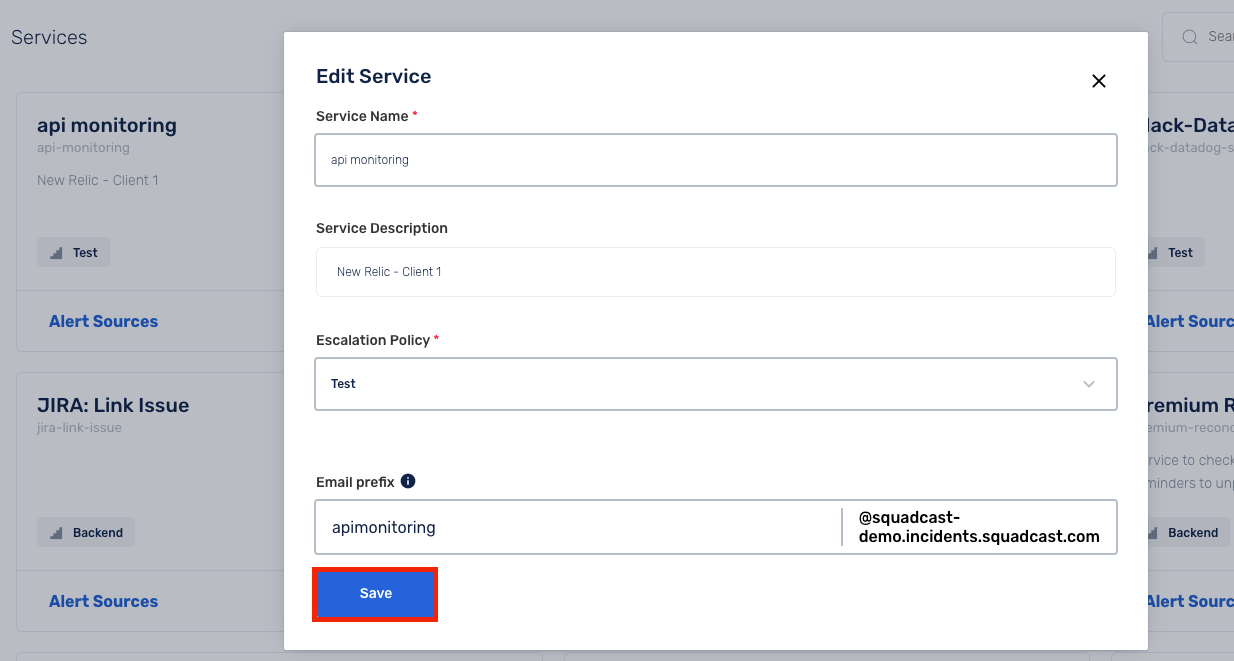
Now, whenever an Email is sent to the Email address of the Service, Squadcast will trigger an incident for it.
This integration does not support auto-resolution of incidents. If the platform you are using resolves an alert, you will have to manually resolve the corresponding incident in Squadcast via the web app or the Squadcast mobile app
Important
-
If you are sending regular emails - emails in the
text/htmlformat, URLs for images will appear as URLs only. If the image is added inline, only the name of the file will appear and not the image. However, please note that if the image is added as an attachment, it will not show up in the payload (and hence, the Incident Description). -
If you are sending emails as plain text - emails in the
text/plainformat, you can add images using the Markdown syntax. The link of the image will appear in the Incident Description. Similarly, you will also be able to format the body content using Markdown, and the content with the same formatting will be displayed in the Incident Description.